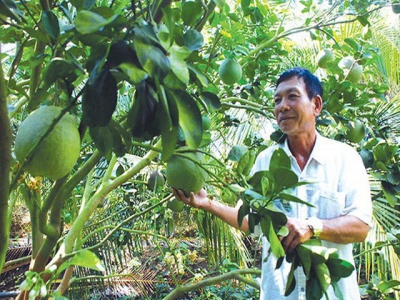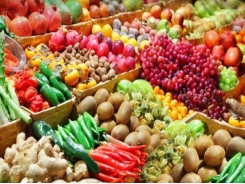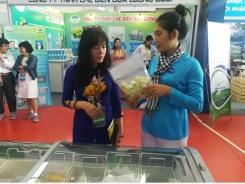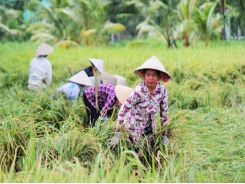Farm produce: rescue campaigns still needed, even as exports rise

Reports show that Vietnam’s farm produce exports have been increasing steadily year after year, but many farmers cannot sell all of their produce.
Vietnam's farm produce exports have been increasing steadily
According to the Ministry of Agriculture and Rural Development (MARD), prior to 2016, Vietnam had nine key export farm produce items, which did not include vegetable and fruit.
Since 2017, vegetable and fruit has been on the list of important farm produce. And in the same year, vegetables and fruit brought export turnover of $3.45 billion, an impressive figure.
In 2017, 76 percent of vegetable and fruit exports in the first 11 months of 2017 went to China.
Vietnam exported $3.3 billion worth of vegetable & fruit exports in the first 10 months of 2018, and China was the biggest consumer.
In the first nine months of 2018, the Chinese market alone consumed $2.2 billion worth of products, far higher than revenue from crude oil ($1.7 billion), which was the biggest export of Vietnam.
Many ‘farm produce rescue campaigns’ have been launched, under which consumers are called on to buy farm produce to help ease farmers’ difficulties.
MARD’s reports all pointed out that most of Vietnam’s farm produce is sold to the most populous country in the world. Besides vegetables and fruits, Vietnam also exports rice to the market.
In the first nine months of 2018, China imported 1.13 million tons of rice, accounting for 23.6 percent of Vietnam’s total rice exports. It also imported cassava and cassava-made products. Of 1.828 million tons of exports, 86.6 percent went to China.
The country is among the top four import markets of Vietnam for rubber, cashew and seafood.
As farm produce remains unsold, state management agencies have to think about how they can help farmers.
Many ‘farm produce rescue campaigns’ have been launched, under which consumers are called on to buy farm produce to help ease farmers’ difficulties.
Dang Kim Son, former director of IPSARD, an institute on agricultural development policies, pointed out that the problem lies in the reliance on the Chinese market.
As farmers lack information about market supply and demand, they cannot plan properly. They would expand their production scale if they could sell products of previous crops.
Son warned that the challenges in the future may be even greater, when the Vietnam-EU FTA and CPTPP take effect.
At present, the number of foreign invested enterprises (FIEs) in agriculture remains modest, but it will be higher in the future. FIEs have big advantages in capital market and technology, and many Vietnamese will work for them.
Có thể bạn quan tâm
Phần mềm

Phối trộn thức ăn chăn nuôi

Pha dung dịch thủy canh

Định mức cho tôm ăn

Phối trộn phân bón NPK

Xác định tỷ lệ tôm sống

Chuyển đổi đơn vị phân bón

Xác định công suất sục khí

Chuyển đổi đơn vị tôm

Tính diện tích nhà kính

Tính thể tích ao hồ



 Vietnam wins deal to supply 123,000 tons of…
Vietnam wins deal to supply 123,000 tons of…  Farmers rescue rice paddies following storm in Vietnam’s…
Farmers rescue rice paddies following storm in Vietnam’s…